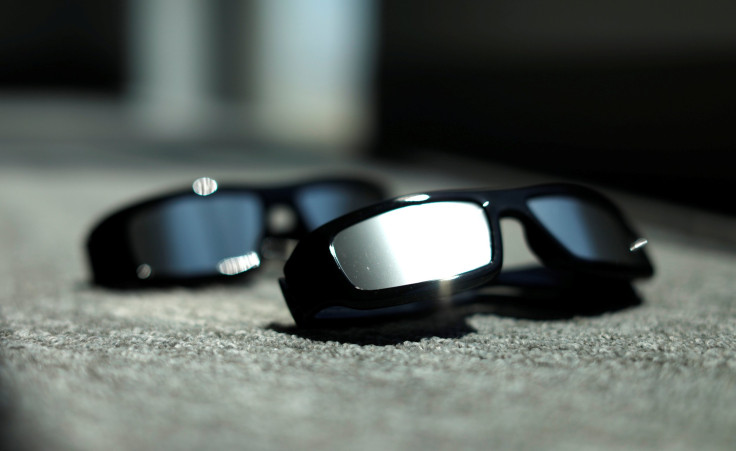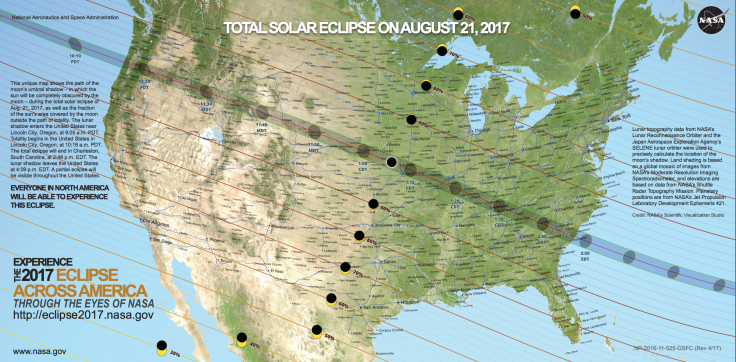Solar Eclipse 2017: Glasses Info, Start Time And How Long It Lasts

It’s been 38 years since the last time there was a total solar eclipse and with the next one coming up Monday, people will soon be able to experience another one in person. But just because the eclipse will be here soon doesn’t mean that it’s too late to prepare.
There's plenty to know before the event:
When is the solar eclipse?
The solar eclipse won’t last long overall, but you’ll have a lengthy window in which to see portions of the eclipse on Aug. 21. According to NASA, the eclipse will begin at around 9:05 a.m. PDT in Oregon and progress across the U.S. throughout the day. It’ll reach the Mountain West at around 10:15 AM MDT, hit the Midwest beginning around 11:30 a.m. CDT and head to the east coast at around 1:00 p.m. EDT.
If you’re fortunate enough to be in the direct path of the eclipse and catch full coverage, your window for seeing the totality will be tighter. Specific times vary by location, but the totality generally will begin around an hour after the eclipse starts. Check out NASA’s interactive map to find out when exactly you’ll be able to see the eclipse.

Where can I find solar eclipse glasses?
For most people, there’ll be no shortage of local locations to find solar eclipse glasses. NASA suggests checking with area libraries, astronomy clubs or museums to see if they still have any giveaways for special eclipse glasses. Because the eclipse involves looking directly at the sun, standard sunglasses won’t protect you against serious eye damage.
Local retailers are a second option for finding glasses. While availability can vary widely depending on where you’re at, NASA recommends looking for glasses that meet the ISO 12312-2 standard for solar protection. With the number of third-party and independent sellers who are flooding the market in advance of Monday, make sure that your frames will provide enough protection when you’re looking at the eclipse.
Alternatively, you can choose to make your own frames for the eclipse. While these viewers aren’t the most high-tech option, they can often be a cheaper and family-friendly alternative to physical frames.
How long will the solar eclipse last?
After beginning in Oregon at around 9:00 a.m. PDT, the eclipse will finish at roughly 7:06 p.m. PDT. The exact length of the eclipse will vary depending on your location, but generally, it’ll last around two and-a-half hours from start to finish.
If you’re within the path of the totality, you’ll have a limited window to view the total blackout. Generally, this period will be within a two to three-minute window. Check out NASA’s guide for exact times on the eclipse’s length if you’re within the path of the totality.
© Copyright IBTimes 2024. All rights reserved.











